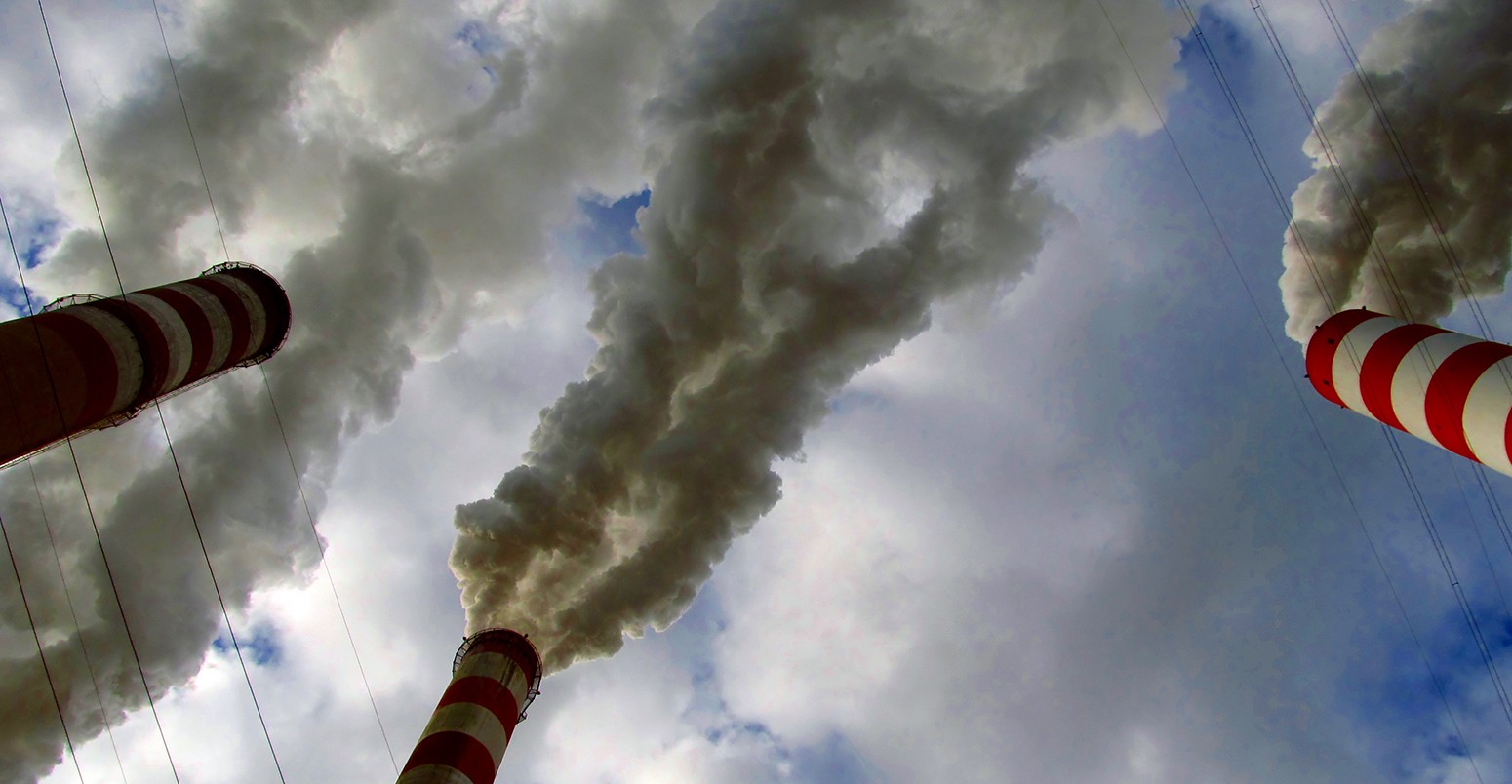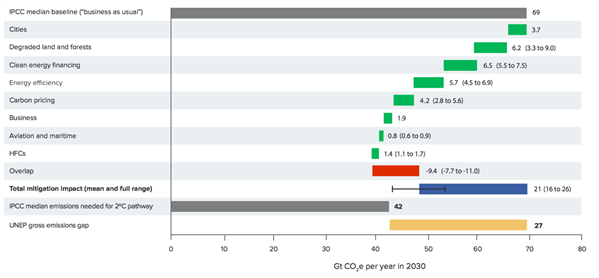
Reports show how UK and the world can achieve ‘deep decarbonisation’
Sophie Yeo
07.07.15Sophie Yeo
07.07.2015 | 10:15amIn the UK, as well as across the world, emissions of greenhouse gases need to be urgently and radically reduced over the coming decades in order to limit the increase in global temperature.
Two reports, released separately today and yesterday, spell out how these reductions can be made. Together, they paint a picture of how governments and businesses should tackle climate change up to 2030 and beyond.
On Monday, a UN-backed report written by scientists at University College London (UCL) recommended several actions designed to enable the UK to hit its legally binding emissions reduction target.
Today, the New Climate Economy issued ten recommendations designed to close the emissions gap that stands between current climate policy and the 2C pathway.
UK plans
The UCL report is part of an initiative called the Deep Decarbonization Pathways Project (DDPP).
This aims to illustrate how the world’s 16 largest polluters can transition to low-carbon economies, coordinated by the UN Sustainable Development Solutions Network (SDSN) and the Institute for Sustainable Development and International Relations (IDDRI).
Their final report will be presented in September this year, three months ahead of the UN’s climate conference in Paris. This week’s contribution is the UK portion of this effort.
The project also asks how far each country can decarbonise, based on their national circumstances, rather than how much it should decarbonise.
The researchers modelled three different scenarios. Each was crafted around a conception of “deep decarbonisation”, where the UK’s emissions fall to 1.5 tonnes of carbon dioxide per capita by 2050 (compared to 8.8 tonnes of CO2 in 2010).
This will ensure that the UK meets its legally binding goal to reduce emissions by 80% on 1990 levels by 2050, Steve Pye, lead author of the report, tells Carbon Brief:
“We created the end point essentially based on the long-term target in the Climate Change Act, the 80% reduction, and these are the per capita numbers that fell out of that analysis.”
The UK analysis uses the target contained in the Climate Change Act because it lies within the realms of “deep decarbonisation” as defined by the DDPP overall, but analysts were not constrained by the current policy frameworks existing across each of the 16 countries, explains Pye. Instead, the report models a “technology focused” approach to what the UK and other countries can achieve. He says:
“The ultimate aim of the whole project is when we aggregate all this analysis up, we can see an energy system that could be consistent with a 2C target.”
Results
The three scenarios modelled for the UK include one focused on near-term decarbonisation of the power sector by harnessing wind, nuclear and carbon capture and storage (CCS); one which sees less of a role for nuclear and CCS, but more for wind, hydrogen and bioenergy; and another which focuses on reducing demand for energy.
Researchers then pulled out some of the messages that held true across each of the scenarios. This includes almost total decarbonisation of the power sector by 2030. The report says:
“Reducing emissions from power generation in 2030 by 85-90% relative to current levels is critical, to meet domestic climate objectives and to provide the platform for the expansion of electrification of end-use sectors thereafter.”
Specifically, carbon intensity of the sector must fall from current levels of around 500 grams of CO2 per kilowatt hour (gCO2/kWh) to between 35 and 75, the report says.
This is the most cost-effective sector in which to reduce emissions in the short term, as the UK needs to replace much of its current nuclear and coal capacity over the next 15-20 years anyway.
But this level of decarbonisation comes with challenges, says the report.
It points to the time frame of the current policies in place to cut emissions in the UK, many of which are set to expire by 2020. A recent report from the UK’s Committee on Climate Change highlighted this as a concern, as the UK struggles to explain how it will meet the target set by its fourth carbon budget. This means a “lack of certainty” for investors, says the UCL report.
In another recommendation at variance with current UK government policy, the report says that there needs to be continuing support for all current low-carbon technologies, particularly onshore wind, which is “proven and cost-effective”. The authors write:
“Taken together, and if not addressed, there is potential for a real risk of ‘slippage’ in the deployment of low-carbon generation technologies.”
Since the May election, the Conservative government has said that onshore wind subsidies will end a year early, following a manifesto commitment to end support for the technology.
The report also sees a key role for carbon capture and storage technology, along with nuclear. Delaying its deployment will increase the necessary investment levels and make it more expensive to meet emissions targets, says the report.
Any significant role of fossil fuels in the energy system after 2040 is “wholly contingent on CCS”, it adds, and that energy policy should be directed towards developing the technology rather than developing new fossil fuel resources that cannot be used without it.
Pye adds that “there is an argument as to whether that constitutes deep decarbonisation per se”.
The report points to the possibility that the UK may have to go further in the future, particularly if there is an international goal in place to achieve net zero emissions in the future, or if the UK wants an even greater chance of keeping temperature rise below 2C.
The Committee on Climate Change should keep the 80% reduction target under review, suggests the report.
New Climate Economy
The Global Commission on the Economy and Climate (New Climate Economy) have also released a report today, outlining a series of ten recommendations that it says could achieve up to 96% of the emissions reductions needed by 2030 to keep warming below 2C.
The report is a sequel to its 2014 report, which set out how the global economy could transition towards a low-carbon model.
The 2015 update looks at the gap between what the world is projected to emit by 2030 based on a business-as-usual scenario, and the level at which emissions need to be in order to avoid breaking the 2C limit.
It then suggests a number of policies that could fill this emissions gap, as illustrated in the graph below.
Source: The 2015 New Climate Economy Report
Recommendations
The report makes ten recommendations, covering a number of sectors.
1. All cities should commit to developing and implementing low-carbon urban development strategies by 2020. By 2050, this could generate savings of US$16.6 trillion, while reducing annual greenhouse gas emissions by 3.7 gigatonnes of CO2 equivalent by 2030.
2. There needs to be a global target of halting deforestation and restoring at least 500m hectares of degraded farmlands and forests by 2050, it says.
3. There need to be investment in clean energy. Scaling up financing to at least $1tn a year could reduce annual greenhouse gas emissions in 2030 by 5.5-7.5 gigatonnes of CO2 equivalent a year, according to the report.
4. Energy efficiency standards should be raised to their global best, which should be supported and facilitated by the G20, according to the report. Not only would this cut emissions, but it would also boost economic output by $18tn to 2035, increasing growth by 0.25-1.1% per year, the report says.
5. All developed and emerging economies, and others where possible, should commit to introducing or strengthening carbon pricing by 2020, and phase out fossil fuel subsidies to boot.
6. G20 countries need to ensure that any new infrastructure is designed to deal with climate risk. Such principles should be included in the G20’s Global Infrastructure Initiative and used to guide the investment strategies of public and private finance institutions, says the report.
7. Low-carbon innovation must be galvanised. Public funding for research and development into such technology is currently too low, and should be at least tripled by major economies by the mid-2020s, the report suggests.
8. Businesses must get on board. All major businesses should adopt short and long-term emissions reductions targets with corresponding action plans.
9. Reduce emissions from the aviation and maritime sectors. Carbon Brief has in-depth explainers of what rising emissions from aeroplanes and ships mean in the effort to tackle climate change.
10. Phase down the use of HFCs through the Montreal Protocol – a controversial topic of conversation that appears to finally be gaining some traction at UN level.
Conclusion
These two reports make it clear that there is no shortage of ideas about what is needed to tackle climate change at both the global and the national level, with numerous pathways available that could lead towards a low-carbon future.
The obstacle is not lack of imagination, but the political will. For these ideas to succeed, they need to gain traction at a political level, the authors say. This will be put to the test in Paris this December, where policymakers hope to sign a new UN deal on climate change, that could guide low-carbon development for decades to come.


